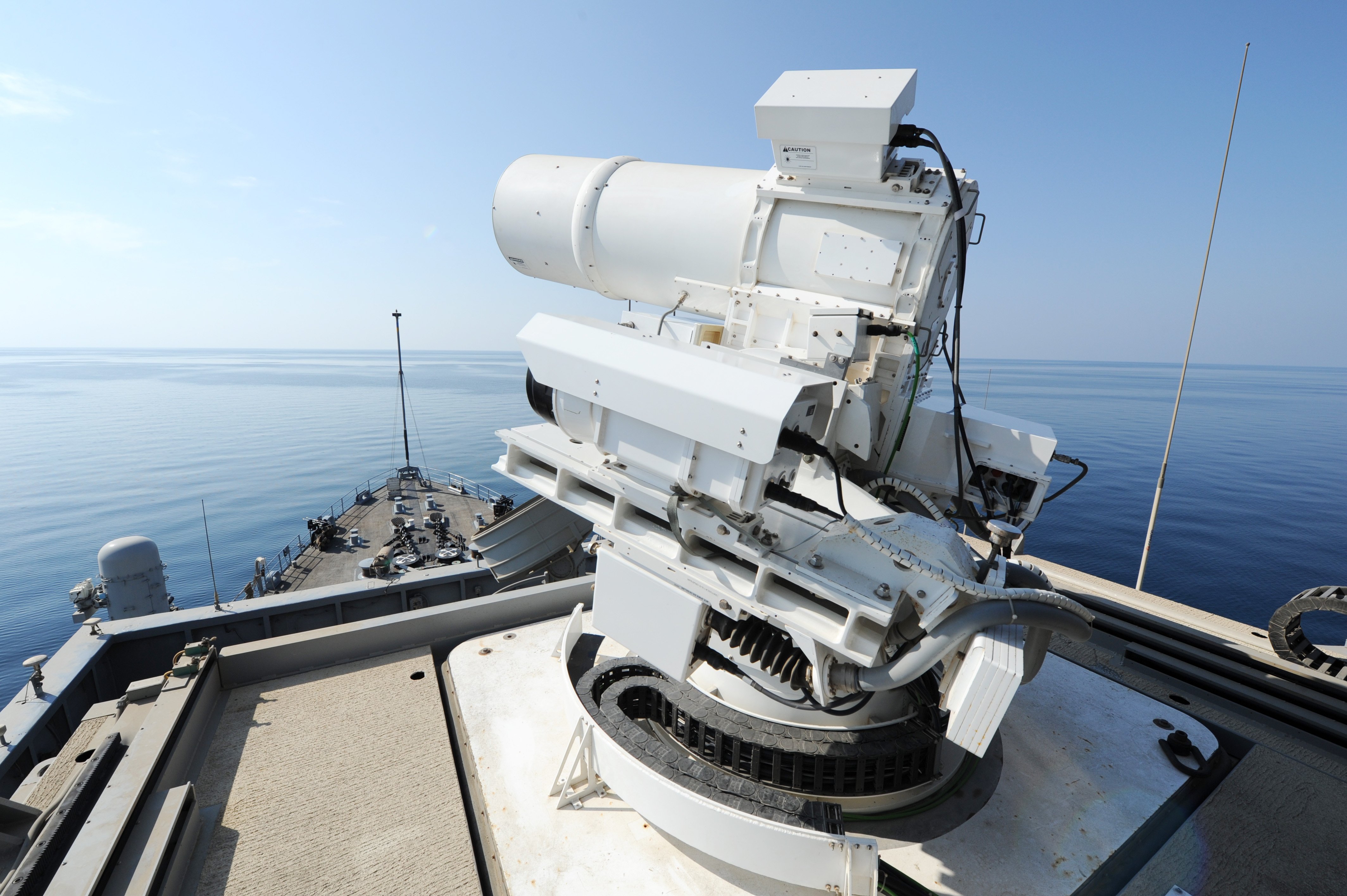
The Navy proposed spending $299 million in Fiscal Year 2019 on laser systems to protect ships against current and anticipated future threats, as part of a rapid prototyping, experimentation and demonstration initiative.
For nearly a decade, the Navy has considered laser technology a more cost-efficient and effective tool to protect ships from emerging threats such as unmanned aerial vehicles (UAVs) and small patrol craft that could swarm a surface ship, according to a Congressional Research Service report, Navy Lasers, Railgun, and Hypervelocity Projectile: Background and Issues for Congress.
The Navy wants to move development of lasers a step closer to deployment, according to budget documents released by the Navy earlier this month.
In the upcoming fiscal year, the Navy wants to purchase four ship-mounted Surface Navy Laser Weapon Systems (SNLWS), which include a High Energy Laser with an integrated low-power laser dazzler. If successful, this system would provide ships with a new means of countering unmanned aerial vehicles, fast inshore attack craft and adversary intelligence, surveillance and reconnaissance (ISR) assets.
The Navy also hopes to install two Optical Dazzling Interdictor, Navy systems (ODIN) on Arleigh-Burke-class guided-missile destroyers in the upcoming fiscal year. This system is described by budget documents as being a near-term shipboard counter-ISR capability.
When contacted by USNI News, officials from the Office of Naval Research declined to comment about the development of the Navy’s laser family of weapons.
Ultimately, the goal for the Navy is to improve the ability of ships to defend themselves against anti-ship cruise missiles (ASCMs) and anti-ship ballistic missiles (ASBMs), according to the CRS report. The Navy’s current ship defense systems have two key limitations: current defensive systems cost much more than the relatively inexpensive threats they protect against, and ships can only carry a finite supply of surface-to-air missiles (SAMs) and ammunition for close-in weapons.
“In the FY2018 defense budget, procurement costs for Navy SAMs range from about $976,000 per missile to several million dollars per missile, depending on the type,” reads the CRS report.
In a limited engagement, current systems can provide adequate protection, the report continues.
“But in combat scenarios (or an ongoing military capabilities competition) against a country such as China that has many UAVs and anti-ship missiles and a capacity for building or acquiring many more, an unfavorable cost exchange ratio can become a very expensive – and potentially unaffordable – approach to defending Navy surface ships against UAVs and anti-ship missiles.”

Additionally, the Navy requested funds in the budget to mature other laser weapon technologies it has already begun to pursue. The Navy plans to spend money to research increasing the wattage of its laser technology it plans to use onboard the San Antonio-class (LPD-17) of amphibious warships. The service will test a Solid State Laser Technology Maturation system, a 150-kilowatt laser weapon demonstrator that will support future laser development for the LPD class of ship. The Navy is also exploring alternative 150-kilowatt laser sources by employing different laser architectures.
In comparison, the Navy in 2014 deployed its first laser system, a 30-kilowatt laser weapon system, aboard USS Ponce (AFSB(I)-15).
Boosting beam power to between 150 kilowatts and 300 kilowatts is considered necessary by Navy researchers to counter “at least some anti-ship cruise missiles,” according to the Congressional Research Service report.
“Even stronger beam powers – on the order of at several hundred kilowatts, if not one megawatt [MW] or more – could improve a laser’s effectiveness against ASCMs and perhaps enable it to counter anti-ship ballistic missiles (ASBMS).”





